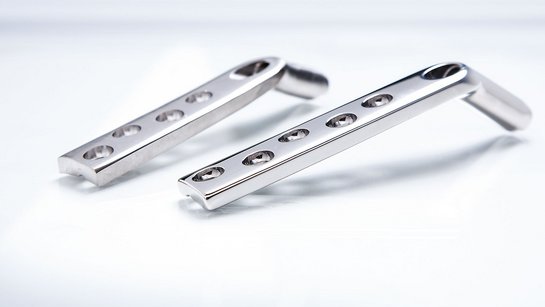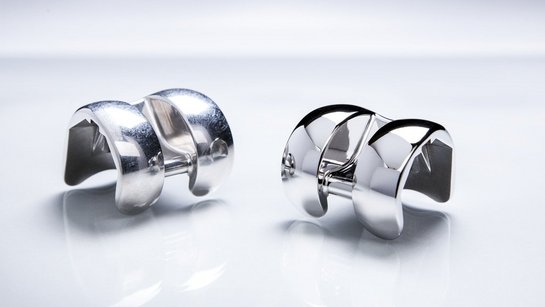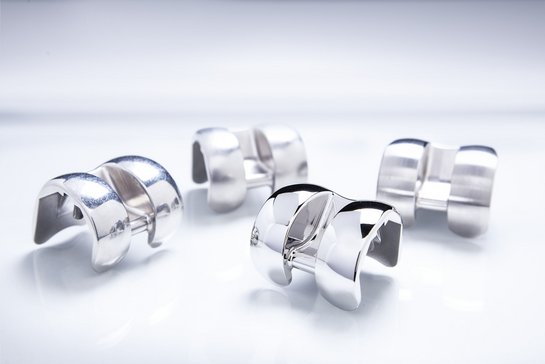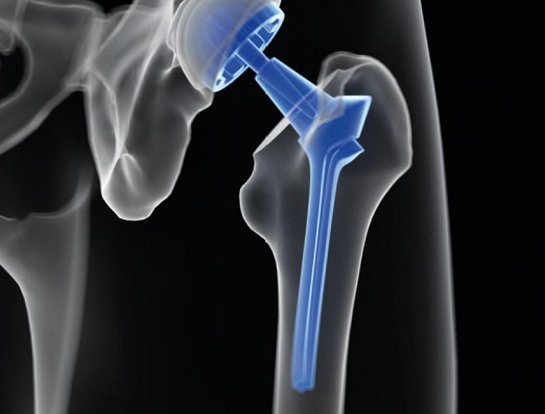
Orthopedic Implants, Part 5 – Mass Finishing Offers Medical-Grade Polishing
, A.Altmann - Volver a la vista general
Mass finishing is a highly versatile finishing technology used for a wide variety of different surface treatment operations including those in the medical industry. As a result, it is no surprise that mass finishing processes are utilized at practically every manufacturing stage for all kinds of orthopedic implants. With decades of experience, Rösler leverages mass finishing technology and develops equipment to meet the tight tolerances required for orthopedic implants.
Common Finishing Processes
Utilizing the pressure between media and work pieces, mass finishing achieves surface finishing as a result of the constant “rubbing” of the media against the work pieces. This generates a grinding and polishing effect, leaving a smooth surface finish that can be as low as Ra = 0.8 micro inches (0.02 μm).
For the comfort of patients and the effectiveness of the components, orthopedic implants must be finished to precise specifications.
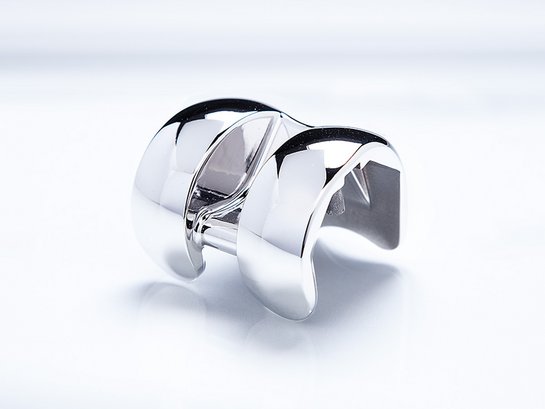
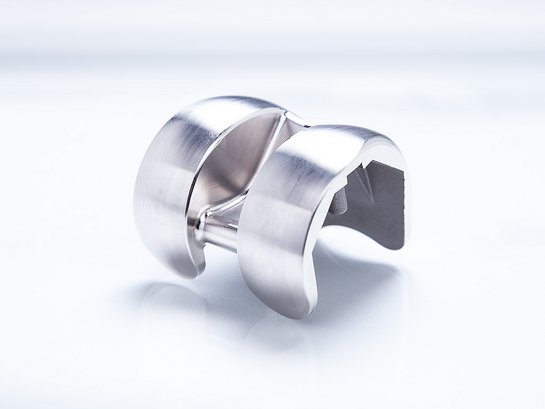
The most common mass finishing processes include:
- Deburring/edge radiusing to smooth surfaces after belt or CNC grinding.
- Polishing such as descaling and edge radiusing hip stems, knee femorals, and other implants after forging or casting.
- Surface smoothing in preparation for subsequent polishing or blasting processes.
- Surface cleaning including the final polishing of knee femorals, femoral heads, and the inside of acetabular cups to Ra = 0.8 micro inches (= 0.02 μm) as the last finishing stage
Mass Finishing Machines
Considering their critical function in the body, orthopedic implants must have a perfect surface finish free of any blemishes. Even the smallest nick or dent on a component will render them unsuitable for implantation. That is why during the various finishing operations, work pieces must not tumble over each other. Instead, the implants must be firmly attached to work piece holders to avoid any contact with each other during the entire finishing process. Several mass finishing machines can be utilized, each with their benefits and areas of expertise.

Drag Finisher
- Used For – Finishing of knee, hip, and other joint reconstruction implants
- Key Benefits – Extremely smooth and polished surface finishes on a wide array of implants, with zero defects, and at surprisingly low costs
- How It Works – Work pieces are individually attached to work stations on a rotating carousel and dragged through a stationary work bowl filled with media
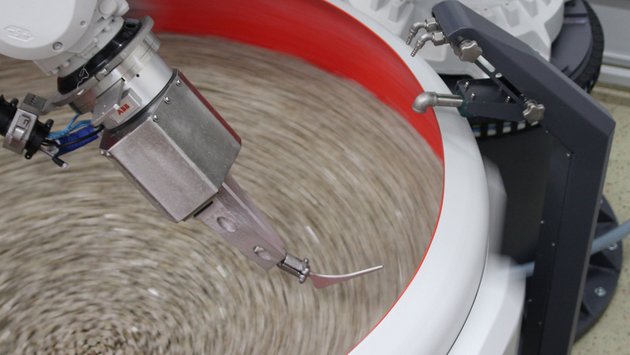
Automated Drag Finishers with Robotic Work Piece Handling
- Used For – Fully automated, robotic-driven processes
- Key Benefits – Creates autonomous, fully automated manufacturing cells, which can be easily integrated into overall manufacturing operations
- How It Works – Robots equipped with specially designed gripper systems load and unload work pieces to and from the work stations using pneumatically activated quick-connect coupling systems
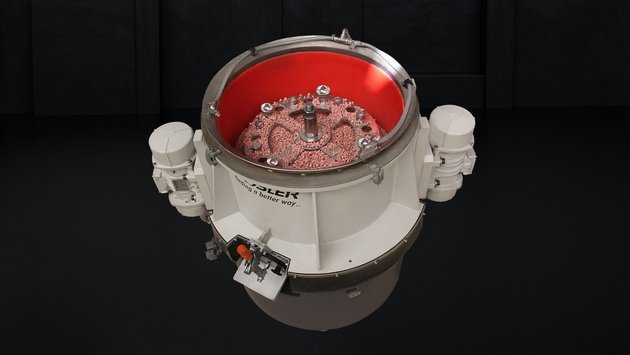
Rotary Vibrators Type DL
- Used For – Finishing of ankle and shoulder implants and acetabular cups or small volumes of knee femorals and tibia plates
- Key Benefits – Efficient processing of low production volumes
- How It Works – Machines equipped with two vibratory motors mounted on the outside of the processing bowl. The work pieces are mounted to fixtures in the bottom of the bowl. This eliminates the risk of nicking and greatly reduces the chance of media lodging in the work pieces.
For less delicate work pieces including screws, trauma and spinal implants, certain medical instruments, etc., standard rotary or tub vibrators or high-energy centrifugal disc finishing machines can be utilized.
